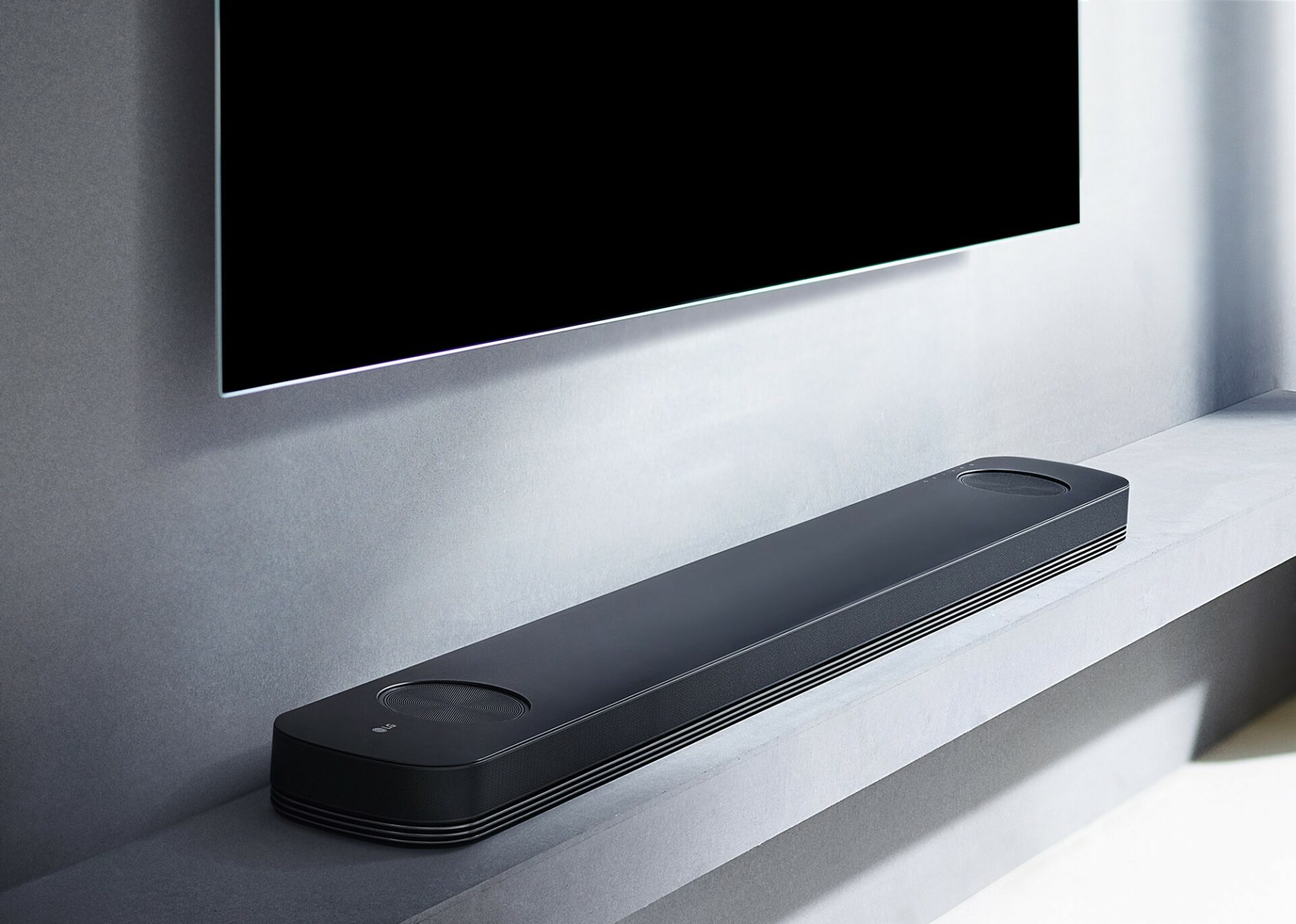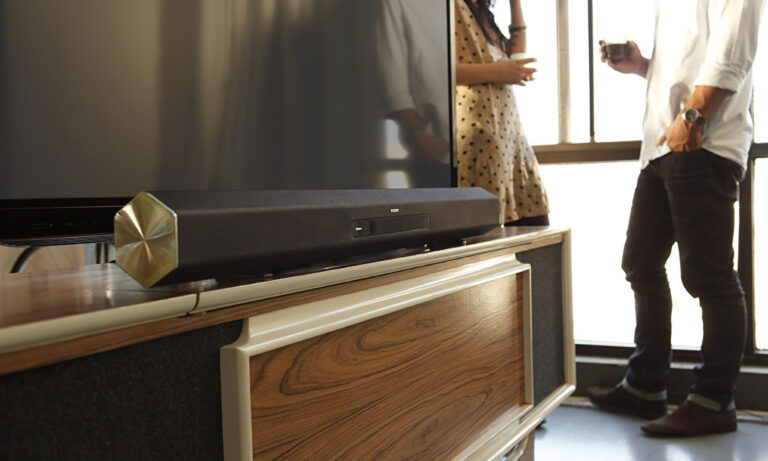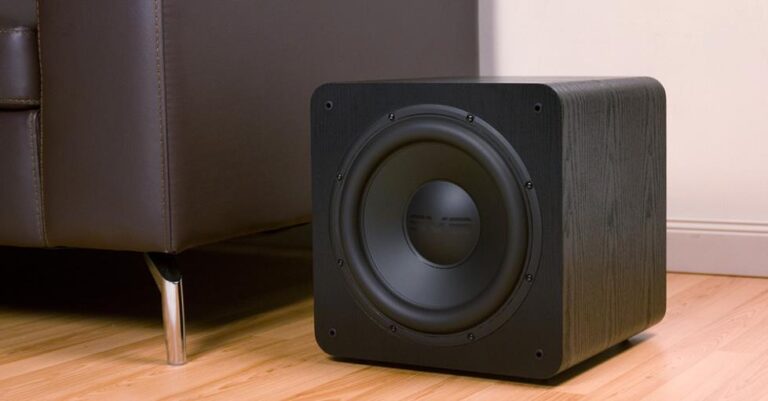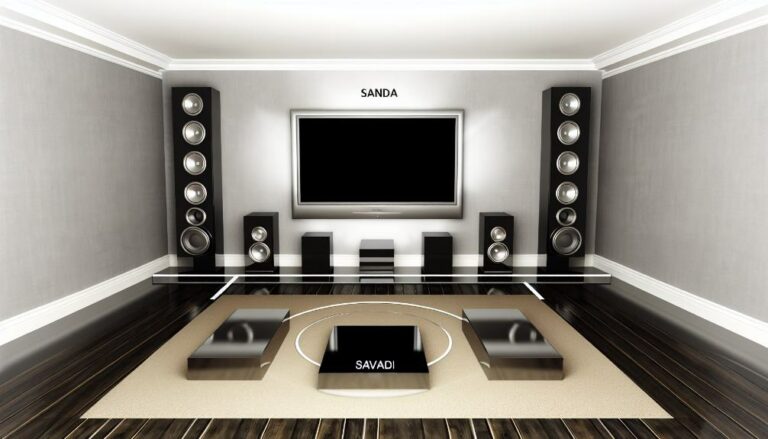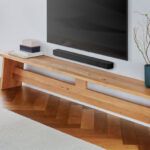Choosing the perfect soundbar can be likened to navigating through a maze of options, requiring careful consideration and knowledge.
Soundbars have emerged as a popular choice for enhancing the audio quality of home theater systems due to their compact design, easy setup, and superior sound performance compared to built-in TV speakers.
When contemplating the selection of a soundbar, several crucial factors should be taken into account. The number of speakers and channels, such as a 2.1 or 5.1 system, significantly impacts the surround sound experience.
Additionally, the dimensions of the soundbar must align with the media console and TV setup. Furthermore, incorporating a dedicated subwoofer is recommended to optimize the bass output.
Price ranges for soundbars vary, with prominent brands like Samsung, Vizio, Sony, LG, Bose, and Sonos offering a range of options to suit different budgets.
Advanced features like smart assistants and multi-room audio connectivity can further enhance the listening experience.
Upgrading the audio of one’s television through the addition of a soundbar presents an affordable and pragmatic solution.
Key Takeaways
- Soundbars are a great first step into home theater audio, offering compact size, easy setup, and better sound quality than built-in TV speakers.
- The most important channel in a soundbar is the center channel, which ensures clear dialogue.
- Soundbars come in different configurations, such as 2.1 or 5.1 systems, with the option to add a subwoofer and surround speakers later.
- Price ranges for soundbars vary from $100 or less for basic models to over $1,000 for high-quality surround soundbars with advanced features. Recognizable brand names include Samsung, Vizio, Sony, Polk, LG, Bose, and Sonos.
What is a Soundbar?
Soundbars, which are compact and easy to set up, offer a superior audio experience compared to most built-in TV speakers.
One interesting statistic is that soundbars can range from basic improvements to room-filling sound, with options such as 2.1 systems (two speakers and a subwoofer) or 5.1 systems (five speakers and a subwoofer).
Choosing a soundbar over built-in TV speakers has several benefits. Firstly, soundbars provide clearer dialog through the center channel, enhancing the overall audio quality.
Secondly, they are denoted by the number of speakers and channels they have, allowing for customization based on individual preferences.
Additionally, soundbars can be easily connected to a TV using HDMI ARC, enabling the TV remote to control the soundbar’s volume.
When choosing the right soundbar, factors to consider include the size of the soundbar, compatibility with the media console and TV legs, the option to add a dedicated subwoofer for better bass, and the availability of advanced features like smart assistants and multi-room audio connectivity.
Features and Specifications
When considering the features and specifications of different models, it is important to evaluate the soundbar’s connectivity options, such as HDMI ARC and Bluetooth, as well as any additional advanced features, like smart assistants and multi-room audio capabilities.
Soundbar connectivity options play a crucial role in ensuring seamless integration with other devices. HDMI ARC allows for easy connection to a TV and enables the TV remote to control the soundbar’s volume. Bluetooth connectivity provides convenience for wireless streaming.
Additionally, soundbar size considerations should not be overlooked. The size of the soundbar should fit on your media console and between your TV’s legs.
It is also important to determine the number of speakers and channels that best suit your needs, whether it is a 2.1 system or a 5.1 system. These factors will contribute to the overall audio experience and satisfaction with your chosen soundbar.
Price Range and Brands
Recognizable brand names in the price range of $100 to $1,000 for soundbars include Samsung, Vizio, Sony, Polk, LG, Bose, and Sonos.
When comparing soundbar prices, it is important to consider the features and specifications that each brand offers.
Samsung soundbars, for example, are known for their sleek design, advanced features, and high-quality sound.
Vizio soundbars are popular for their affordability and excellent value for money.
Sony soundbars are renowned for their superior audio performance and cutting-edge technology.
Polk soundbars are favored for their balanced sound and durability.
LG soundbars are praised for their user-friendly interfaces and seamless connectivity.
Bose soundbars are highly regarded for their exceptional sound quality and immersive experience.
Sonos soundbars are appreciated for their versatility and compatibility with multi-room audio systems.
Overall, these brands offer a range of options to suit different budgets and preferences, making it easier to find the best soundbar for your needs.
Frequently Asked Questions
Can I connect my soundbar to multiple devices at once?
Soundbars with multiple connectivity options allow you to connect multiple devices simultaneously, enhancing convenience and flexibility. This feature enables seamless switching between devices and eliminates the need for constant cable swapping, providing a streamlined and efficient audio experience.
How do I know if a soundbar is compatible with my TV?
One way to connect a soundbar to a TV is through HDMI ARC, which allows for easy control of the soundbar’s volume with the TV remote. Another option is Bluetooth connectivity or using HDMI inputs. To ensure compatibility with audio formats, check if the soundbar supports the formats supported by your TV.
Are there any soundbars that offer wireless surround speakers?
Wireless surround speakers in soundbars offer the advantage of a more immersive and spacious audio experience. They eliminate the need for running wires across the room. However, the sound quality may vary compared to soundbars without wireless surround speakers.
Can I control the soundbar using a mobile app?
Controlling a soundbar with a mobile app has its pros and cons. It offers convenience and accessibility, allowing users to adjust settings remotely. However, potential issues include connectivity problems and limited functionality. Troubleshooting common issues involves checking network connections and updating the app.
What are the advantages of a soundbar with built-in subwoofers compared to a separate subwoofer?
Built-in subwoofers in a soundbar offer advantages such as enhanced convenience, space-saving, and improved integration. However, separate subwoofers generally provide better sound quality, deeper bass response, and the ability to fine-tune audio settings for a more immersive audio experience.

